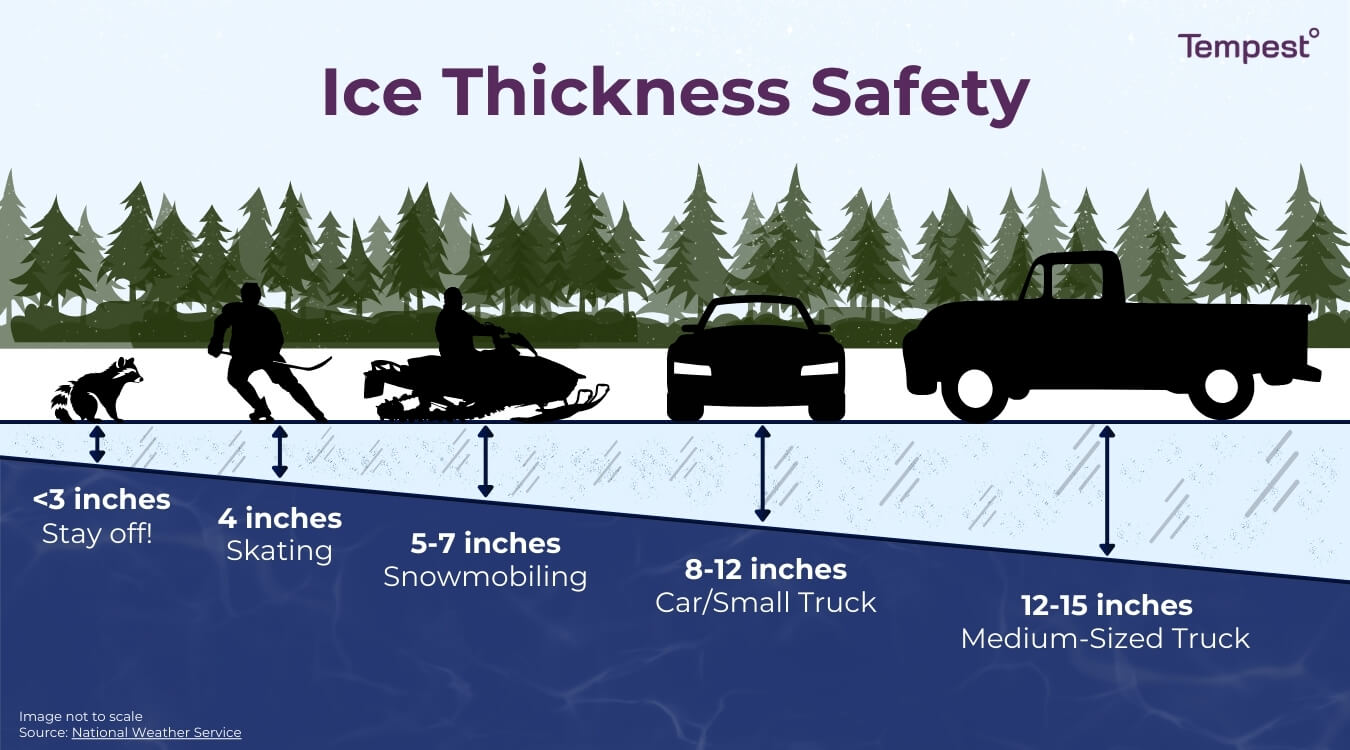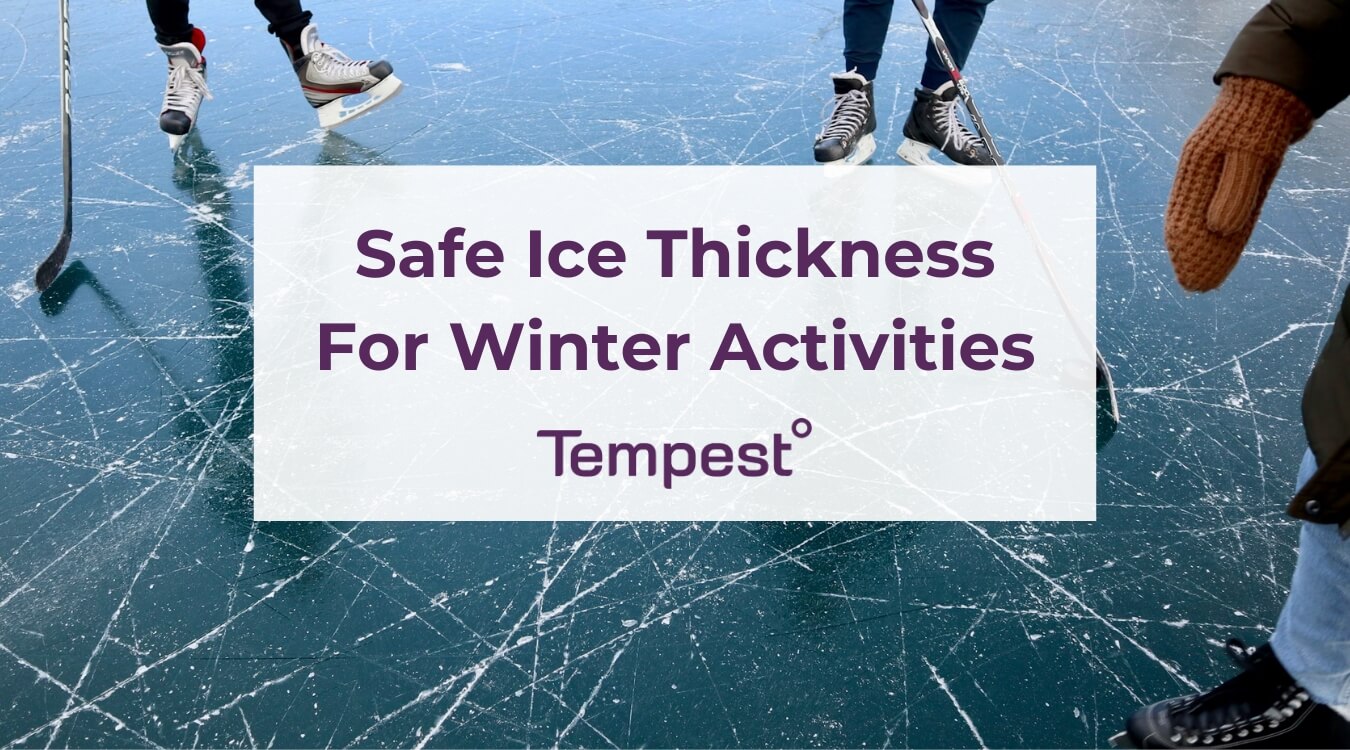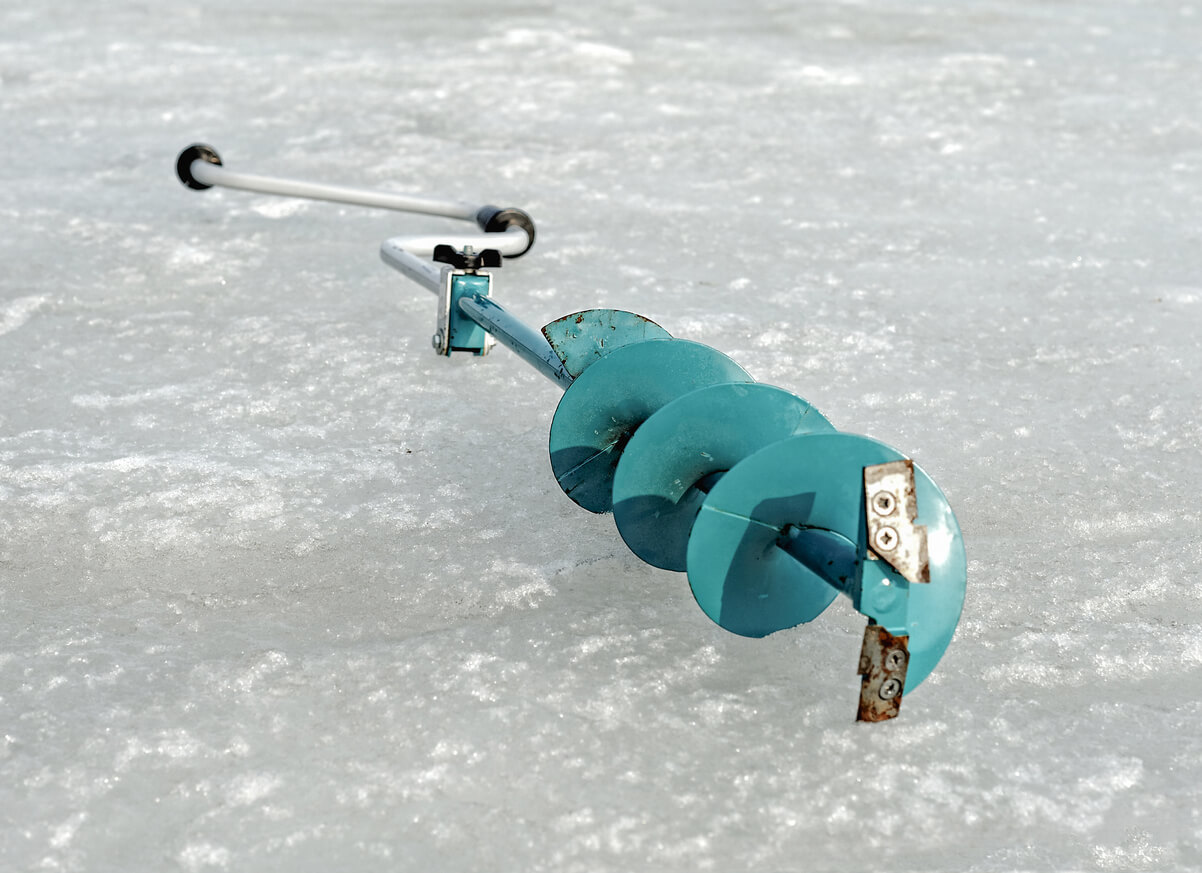Do you know the safe ice thickness for skating, ice fishing, or snowshoeing? Check out our ice safety chart to learn when to stay off the ice.
Whatever your favorite outdoor activity is during the winter, educating yourself on ice thickness safety is important to avoid danger. The ideal thickness will depend on whether you plan to walk, drive, or skate on the ice. Below, we’ll explore the safe ice thickness for various winter activities.
Shop the Tempest Home Weather System for accurate local weather data on temperature, wind speed, and more.

Ice Safety Chart
According to the National Weather Service, the following ice safety chart is a visual guide outlining safe ice thickness levels for various winter activities. As a good rule of thumb, ice is never 100% safe. If you have any doubts about ice thickness, it’s best to stay off it rather than take the risk.
|
Ice Thickness |
Safe Load Size |
|
< 3” |
Small animals (humans stay off!) |
|
4” |
Ice skating / fishing |
|
5 – 7” |
Snowmobiling |
|
8 – 12” |
Car / small truck |
|
12 – 15” |
Medium-sized truck |
How Thick Does Ice Need To Be To Walk On?
To safely walk on ice, it must be at least 4 inches thick. It is unsafe to be on the ice if it is any thinner. Otherwise, you risk falling through the ice, which can have serious consequences. Before you venture out, check the ice thickness and assess its appearance at the shoreline. Avoid the area if it’s cracked or slushy.
How Thick Should Ice Be To Skate On?
Recreational activities done on foot, like skating, should follow the same guidelines as simply walking on the ice. In this case, make sure the ice is no thinner than 4 inches before skating on it. Keep in mind that the ice should be thicker if you have a large group planning to skate, like for a hockey game.
Learn how cold and warm fronts influence weather conditions and winter storm severity.
How Thick Should Ice Be For Ice Fishing?
If you’re walking onto the ice to fish, it should be at least 4 inches thick. However, if you plan on snowmobiling onto the ice with your fishing gear, it should be thicker — between five and seven inches — to accommodate the added weight.
Before setting up your ice fishing hut for the day, check the ice conditions at different locations surrounding your fishing spot, like every 150 feet, to ensure the entire area is safe.
How Thick Does Ice Need To Be To Drive On?
Your final question might be — how thick does ice have to be to drive on? The Maine Department of Inland Fisheries and Wildlife explains that driving a passenger vehicle on a frozen body of water is generally not recommended unless necessary. Depending on where you live, local regulations may even ban this activity.
If you must drive on the ice, make sure it’s at least 8 inches thick for a car or small truck and 12 inches for a larger pickup. Just like when you’re on foot, plan to stop every few hundred feet to continue checking ice thickness for safety.
Check out these weather fun facts to wow your kids and stay safe outdoors.
How To Check Ice Thickness
There are several different ways to check ice thickness. You can make a hole in the ice with a chisel, drill, or auger and then use a ruler or tape measure to determine its thickness. Ice thickness can vary depending on the water depth and currents, among other factors. It’s important to continue checking ice thickness as you move further from the shore.
Understand Your Local Weather Better With The Tempest Weather System
Just like you might check the feels-like temperature before ice fishing, skating, or snowmobiling, checking ice thickness levels is necessary to help you safely prepare for a day on the ice.
And, if you want an accurate way to monitor winter conditions where you live, mounting a weather station like the Tempest Home Weather System gives you real-time weather information for your precise location.
Shop the Tempest Home Weather System today for a guaranteed better forecast to support all your weather-driven decisions.


